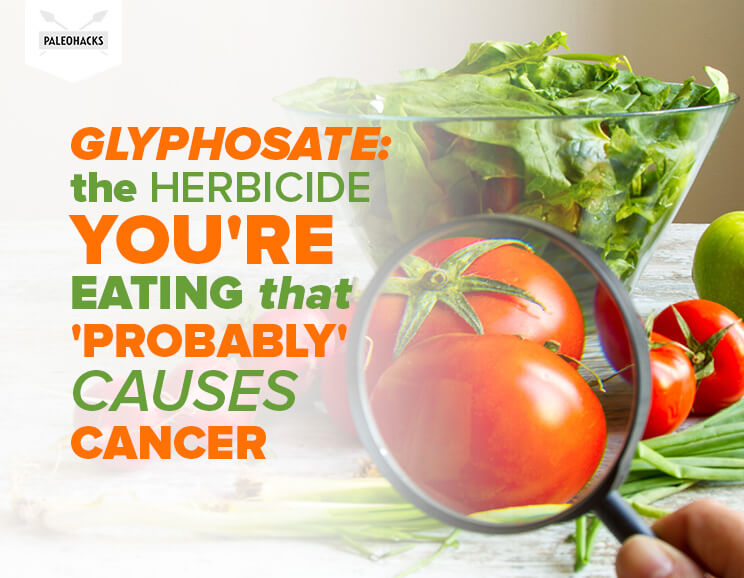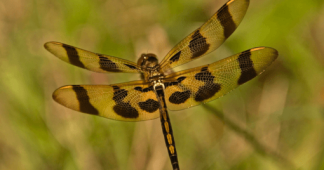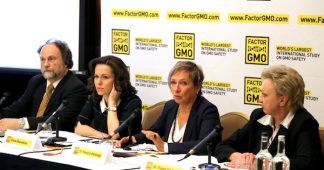December 18, 2017
Pesticide suicide refers to toxic chemicals mucking up the health of animals, plants and insects. This worldwide causatum may be totally out of control or maybe not; nobody knows for sure. Therein lies the scary part.
However, what is known is not encouraging: “Industrial toxins are now routinely found in new-born babies, in mother’s milk, in the food chain, in domestic drinking water worldwide… Humans emit more than 250 billion tonnes of chemical substances a year, in a toxic avalanche that is harming people and life everywhere on the planet.” (Source: Scientist Categorize Earth as a Toxic Planet, Phys Org, February 7th 2017) For obvious reasons, it is not at all comforting to hear Earth referred to as a “toxic planet.” Indeed, it would be insulting, if not true.
In that regard, there may be connecting dots around “toxic planet.” A huge increase in the incidence and prevalence of chronic diseases has been reported in the United States over the last 20 years during the same time frame as pesticide/chemical usage has become ubiquitous. (Journal of Organic Systems) At the beginning of the 20th century infectious diseases like tuberculosis, pneumonia, and diarrheal disease were the leading causes of death. By the 21st century mortality by infectious diseases was replaced by chronic illnesses like heart disease, stroke, and cancer. Regrettably, there is a pronounced trend in America. A Rand Corporation study states that 60% of Americans have one and 40% have multiple chronic conditions. (Source: Incidence and Prevalence of Chronic Disease, Autoimmunity Research Foundation)
Sixty percent (60%) of Americans with a chronic condition is almost impossible to grasp because it’s a mind-boggling statistic. How is this possible? And, why so many?
Whether pesticide suicide (inclusive of all chemicals) is reality is not known 100% certain. But, the indicators aren’t hopeful. The rate of growth of chronic problems increasingly suggests serious problems exist within ecosystems, border-to-border from Maine-to-California and Canada-to-Mexico. Of course, given enough time, truth is revealed via ecosystem breakdowns (already starting) and/or advancing cases of autism, gastrointestinal issues such as inflammatory bowel disease, chronic diarrhea, colitis, Crohn’s disease, obesity, cardiovascular disease, depression, cancer, cachexia, Alzheimer’s disease, Parkinson’s disease, multiple sclerosis, and ALS, or none of above, which would, in part, be indicative of no ecosystem toxicity.
Further to the point, Jennifer Hsaio’s article, “GMOs and Pesticides: Helpful or Harmful,” Harvard University, August 19, 2015: “According to the National Institutes of Health (NIH), the health effects of pesticides are not well understood, but their use has been associated with conditions such as cancer, diabetes, and neurological effects.”
Once again, the phrase “pesticides are not well understood.” Yet sprayed coast-to-coast to kill things. “Health effects of pesticides not well understood,” prompts a logical response: Is society totally delusional, deranged, crazed? Answer: Yes, it probably is! How can a well-adjusted society permit use of chemicals manufactured to kill things helter skelter throughout the countryside when… “Health effects of pesticides are not well understood?”
The following quote from Julian Cribb’s Surviving the 21st Century (Springer Int’l Publishing, Switzerland 2017) likely tells the story:
“The evidence that we ourselves— along with our descendants, potentially for the rest of history— are at risk from the toxic flood we have unleashed is piling up in literally tens of thousands of peer-reviewed scientific research reports. Despite this mass of evidence, the public in most countries is only dimly aware, or even largely unaware of what is being done to them. The reason is twofold: First, most of these reports are buried in scientific journals, written in the arcane and inaccessible language used by specialists. The public may hear a little about certain chemical categories of concern, like pesticides and food additives, or the ‘dirty dozen’ (Stockholm C0nvention 2013) industrial super-poisons, or ‘air pollution’ in general. However, these represent only a scant few pixels in a much larger image now amassing in the scientific literature of tens of thousands of potentially harmful substances which are disseminating worldwide. Second, the proportion of chemicals which have been well-tested for human safety is quite small…” (Page 108)
In short, humanity is poisoning itself with a massive flood of chemicals all across the world, dripping wet with toxicity, and shockingly, nobody is really sure of the impact! Yet, there are dizzying numbers of academic research papers, literally tens of thousands of peer-reviewed scientific research that discuss the issue. Duh!
Still, by all appearances, in the public domain, absolutely nobody knows for sure what’s going on, which is a national tragedy, as well as a facsimile of the “unknown” world at Fukushima Daiichi Nuclear Power Plant. Yet, chemicals may be more ubiquitous worldwide than Fukushima Daiichi, who knows for sure? Could be a tie.
One of the chemicals that is most newsworthy, most discussed, and most entangled in controversy is glyphosate, which is one of the most widely used herbicides in the U.S. for agriculture, forestry, lawns, gardens, and industrial weed areas. In fact, since 1974, glyphosate usage has increased by leaps and bounds. Two-thirds of the total volume applied from 1974 to 2014 has been sprayed in the past 10 years alone. Glyphosate agricultural usage in the U.S. in 1974 was 1400 (1000 lb) growing to 249,906 (1000 lb) by 2014.
“Genetically engineered herbicide-tolerant crops now account for about 56% of global glyphosate use. In the U.S., no pesticide has come remotely close to such intensive and widespread use. This is likely the case globally, but published global pesticide use data are sparse. Glyphosate will likely remain the most widely applied pesticide worldwide for years to come, and interest will grow in quantifying ecological and human health impacts. Accurate, accessible time-series data on glyphosate use will accelerate research progress.” (Source: Charles M Benbrook, Trends in Glyphosate Herbicide Use in the United States and Globally, Environmental Sciences Europe, 28:3 January 2016)
Monsanto sold the first commercial glyphosate product in the U.S. in 1974. The brand name is Roundup. Subsequently, many crops have been genetically engineered to be herbicide-tolerant or GE-HT. But, does GE-HT herbicide-tolerance really work?
It was only a few weeks ago that the EU granted glyphosate a new five-year lease throughout Europe, closing one of the most bitterly fought pesticide relicensing battles ever, as 1.3 million EU citizens endorsed a petition to ban the product. “But the enzyme-blocking chemical has also become a mainstay of modern agricultural techniques that farmer’s unions see as environmentally friendly, even as critics condemn it as a ‘pesticide treadmill’ of danger to plants, animals, and people.” (Source: Arthur Neslen, Controversial Glyphosate Weedkiller Wins New Five-Year Lease in Europe, The Guardian, Nov. 27, 2017) Are farmer’s unions correct or are 1.3 million petitioners correct?
Still, there may be serious problems with GE-HT: According to the following article: Genetically Engineered Crops, Glyphosate and the Deterioration of Health in the United States of America, Journal of Organic Systems, Vol. 9, No. 2, 2014: “A huge increase in the incidence and prevalence of chronic diseases has been reported in the United States (US) over the last 20 years. Similar increases have been seen globally. The herbicide glyphosate was introduced in 1974 and its use is accelerating with the advent of herbicide-tolerant genetically engineered (GE) crops. Evidence is mounting that glyphosate interferes with many metabolic processes in plants and animals and glyphosate residues have been detected in both. Glyphosate disrupts the endocrine system and the balance of gut bacteria, it damages DNA and is a driver of mutations that lead to cancer.”
“The World Health Organization recently announced that glyphosate is a probable carcinogen… Although studies have shown conflicting conclusions about the link between glyphosate and cancer in humans, glyphosate has been linked to cancer in rats and mice and experiments in human cells have shown that exposure to glyphosate can cause DNA damage,” Ibid.
GE crops are typically far more contaminated with glyphosate than conventional crops, courtesy of the fact that they’re engineered to withstand extremely high levels of Roundup without perishing along with the weed. “Monsanto has steadfastly claimed that Roundup is harmless to animals and humans because the mechanism of action it uses (which allows it to kill weeds), called the shikimate pathway, is absent in all animals. However, the shikimate pathway is present in bacteria, and that’s the key to understanding how it causes such widespread systemic harm in both humans and animals,” (Source: Monsanto’s Roundup Herbicide May Be Most Important Factor in Development of Autism and Other Chronic Disease, Mercola, June 9, 2013)
According to The Institute of Responsible Technology d/d May 10, 2013: “It was ‘supposed’ to be harmless to humans and animals—the perfect weed killer. Now a groundbreaking article just published in the journal Entropy points to Monsanto’s Roundup herbicide, and more specifically its active ingredient glyphosate, as devastating—possibly ‘the most important factor in the development of multiple chronic diseases and conditions that have become prevalent in Westernized societies. That’s right. The herbicide sprayed on most of the world’s genetically engineered crops—and which gets soaked into the food portion—is now linked to autism … gastrointestinal issues such as inflammatory bowel disease, chronic diarrhea, colitis and Crohn’s disease, obesity, cardiovascular disease, depression, cancer, cachexia, Alzheimer’s disease, Parkinson’s disease, multiple sclerosis, and ALS, among others.” Prompting the logical question: What chronic health-related problems are not listed?
For more details about pesticide issues as discovered by The Institute of Responsible Technology, Jeffrey Smith interviewed Stephanie Seneff, PhD, Senior Research Scientist at MIT. Dr. Seneff has been involved in research at MIT for over three decades. A video by The Institute of Responsible Technology follows:

According to Dr. Seneff: Monsanto has steadfastly claimed that Roundup is harmless to animals and humans because the mechanism of action it uses (which allows it to kill weeds), called the shikimate pathway, is absent in all animals. However, the shikimate pathway is present in bacteria, and that’s the key to understanding how it causes such widespread systemic harm in both humans and animals. The bacteria in your body outnumber your cells by 10 to 1. For every cell in your body, you have 10 microbes of various kinds, and all of them have the shikimate pathway, so they will all respond to the presence of glyphosate!
Glyphosate causes extreme disruption of the microbe’s function and lifecycle and glyphosate preferentially affects beneficial bacteria, allowing pathogens to overgrow and take over. At that point, your body also has to contend with the toxins produced by the pathogens. Once the chronic inflammation sets in, you’re well on your way toward chronic and potentially debilitating disease.
According to The Detox Project: Anresco Laboratories has found glyphosate in a range of U.S. food products, and the chemical also tested positive in urine, conducted by the University of California San Francisco (UCSF), using validated LC-MS/MS method.
Here’s the problem, as stated by The Detox Project: “The cultivation of Roundup Ready GMOs has considerably increased food contamination by glyphosate. Roundup Ready plants do not degrade glyphosate but tolerate it, so they accumulate Roundup residues during their growth. As a consequence, glyphosate has among the highest maximum residue limits for pesticides with up to 500,000 parts per billion authorized in some GM feed. A recent study on 10 batches of GM soybeans from Iowa found glyphosate at an average concentration of 11,900 ppb (maximum of 20,100 ppb). According to Monsanto, residues levels of up to 5,600 ppb in GM soy represent ‘extreme levels.”
In the main, this article has dealt with one chemical, i.e., glyphosate, at the expense of further investigation of the entire complex of chemicals. That’s an encyclopedic task over decades just to get to the bottom of whether pesticide suicide is truly a reality. Therein lies the horrifying, frightening aspect of a world ubiquitously covered with chemicals. By the time you know for sure, it’s late.
Meanwhile, a Rand Corporation study states that 60% of Americans have one and 40% have multiple chronic conditions: “Nearly 150 million Americans are living with at least one chronic condition; around 100 million of them have more than one. And nearly 30 million are living, day in and day out, with five chronic conditions or more. (Source: Chronic Conditions in America: Price and Prevalence, Rand Review, July 2017)
A colossal crisis? Answer: Without doubt, yes!











